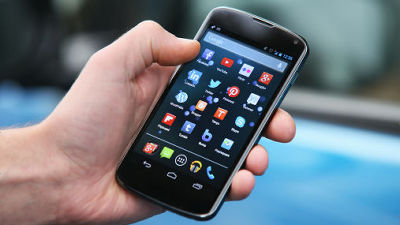Mobile applications and mobile browsers, which one is that with a lot of traffic?

Many applications can be installed on smartphones, for example, even if you look at a bit of news, because there are specialized applications and curation applications, it was considered that the roles of mobile browsers gradually declined. Indeed,As of 2013I investigated what application users are using on smartphones, and found out that they are using the application at about 80% of the time spent. However, according to the latest survey, the traffic volume of the mobile browser seems to have increased more than twice as much as that of the application,VentureBeatI am exploring.
Wait, what? Mobile browser traffic is 2X bigger than app traffic, and growing faster | VentureBeat | Mobile | by John Koetsier
http://venturebeat.com/2015/09/25/wait-what-mobile-browser-traffic-is-2x-bigger-than-app-traffic-and-growing-faster/
Morgan Stanley released the latest(PDF)ReportAccording to it, it is clear that the traffic of mobile browser has expanded to twice the traffic of mobile application.
The graph below shows that between 2013 and 2015ComScoreMorgan Stanley compiled the data "Do you open the media with an application or a browser?" Collected by Morgan Stanley. The vertical axis shows the number of unique visitors, and it is data investigated for a medium that has both mobile application (blue) and website (yellow). According to this, it is understood that the user is checking the medium from the mobile browser year by year.

On the other hand, comScore releasedReportAccording to it, it is also clear that in the United States, 87% of the use time of the smartphone is using the application.
The following graph is data classifying usage time of American PC and smartphone etc. by purpose, usage time is classified as PC (black), mobile application (light blue), mobile browser (blue). Looking at the data, it is clear that about 87% of smartphone usage time is spent on application usage in 2015, and this time it is found that it increased by 90% in just 2 years. On the other hand, the use time of the mobile browser is about 10% of the whole when using the smartphone, and the rate of increase is also very gentle compared with the application.

There are two data that seems to be contradictory, but both are correct. The two look quite different, as Morgan Stanley's data focuses on "number of unique visitors" and comScore's data focus on "time spent by users."
Suppose, for example, a smartphone user is using 15 services using a smartphone. Although checking ten of them from the browser application but checking the remaining five services thoroughly with the dedicated application, the number of unique visitors to the media is overwhelmingly more for the media, but overall use It may be that the application is longer if you compare the time. Indeed,80% of the use time of the smartphone is monopolized by only five applicationsResearch data showing that it is also published.
Many companies have released a number of applications for their own services in order to make companies more tightly connected with their customers. However, according to a survey, the average number of installed applications on a smartphone seems to be around 50 to 60, so it is almost impossible to install dedicated applications on smartphones for every company or service.
In fact, mostly using the service to install specialized apps specifically for only favorite, among the top 30 retailers in the United States, access from mobile applications exceeds 50% Only Amazon and Wal-Mart are strict numbers.
According to another study by Morgan Stanley, of the top 50 Web services available from mobile terminals, only 12 services are used from mobile applications, and these services are a huge IT company such as Google It is clear that it is all that was created. The following graph compares the services that are frequently used from mobile applications by the number of unique visitors from applications and browsers, which shows that many services have many users via browsers.

In other words, on smartphones, usage time is concentrated on a few of the applications, and services that did not install the dedicated application will be used via the browser. As the number of users who use the service via such a browser is increasing, the amount of traffic via the browser is jumping up. Like Pandora, most of users have services via applications, but even application-based services like Instagram and SnapChat are very surprising that many users are using the browser.
Related Posts:
in Mobile, Posted by logu_ii







